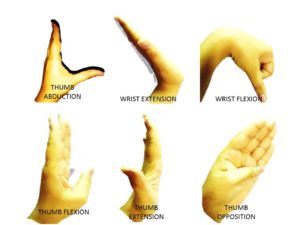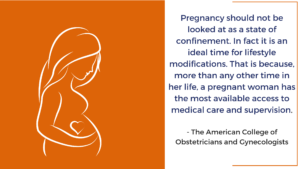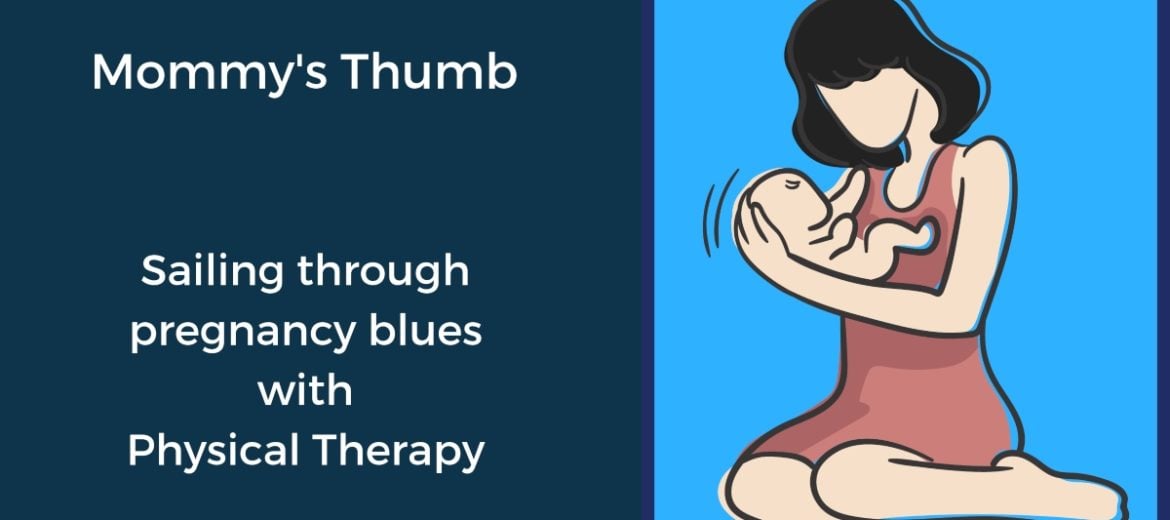Have you recently adorned motherhood and have a constant issue with your thumb? Then this article is for you. Pregnancy is a transformational phase for every woman. With lots of added unwanted extra weight and belly fat, there may be some painful medical conditions that find their way into it too. It is not a surprise to know that most new mothers try almost everything to cure their musculoskeletal distress, from their in-laws’ advice to some most peculiar home remedies, but unfortunately, majority of them end up with painkillers and lots of additional frustration. Holding your little bundle of joy is indeed a beautiful experience but just think what if your painful hand limits you from doing this?
The gestational phase is undoubtedly challenging, but postnatal (after delivery) phase is a bigger challenge. Once your child is out in this world, you have an added responsibility. New mothers should, thus, be extra precautious when it comes to being healthy mentally and physically.
A woman experiences many hormonal fluctuations during the nine months. A painful thumb in both hands post-pregnancy is one of the effects of this hormonal imbalance and physical stress. Most women today are working, and professional demands are such that they have to resume their jobs as soon as their health permits. Now a working professional woman who is also a newly made mother not only has to meet her professional deadlines but also has to look after her child. So technically, a woman who is employed in a medical, corporate, government or private setup has to do overtime now. The added mental and physical stress outpours as small and large “shots” of musculoskeletal pain.
Understanding the Cause
In medical terms, Mommy‘s thumb is known as De Quervains tenosynovitis. Though the scientific term seems little heavy to absorb, but the underlying pathology and treatment are pretty simple to understand. The human wrist is divided anatomically into six compartments, each consisting of different number of tendons (anatomical structures that join muscle to bone). The first compartment comprises 2 tendons covered by a sheath (synovium). With repetitive wrist and thumb loading ( due to baby care, household work, and your job), less rest and an incorrect approach of addressing wrist and thumb pain, the covering sheath of the tendons become inflamed.
Know the Symptoms
Are you wondering whether you have Mommy’s thumb? Look out for these signs:
- Localized swelling in and around wrist and thumb,
- Pain at wrist especially around the junction of thumb and wrist that increases at night.
- Pain or inability in lifting, washing, and feeding baby or doing activities that demand muscular effort from wrist and thumb (combing, lifting, washing, cooking, etc.). Simple day to day tasks become a big challenge!
- Weak grip which may result in difficulty in holding a glass of water or a pen for long.
- Pain which may radiate and be felt in forearm, upper arm, elbow and neck which may sometimes be caused by an untreated or wrongly treated thumb. This happens due to compensatory ways that our body adapts to in order to reduce the load on the pathological structures.
- Increased irritability and decreased work productivity.
Know about Appropriate Treatment: Physical Therapy to the Rescue of Mommies!
Physical therapy is not only critical in the treatment of De Quervains tenosynovitis but also plays a crucial role in preventing the condition. Physical therapeutic treatment of De Quervains tenosynovitis primarily targets the underlying “cause”, unlike medications that merely give relief from symptoms. It is impervious to note that you must get yourself examined by a physical therapist and should attempt exercises only after a confirmed diagnosis.
Never self-diagnose/treat your medical condition on the basis of any random online video channel or infographics. The best person who can relieve you of a painful thumb is your physical therapist! It may take some time, but it will truly be worth it.
Physical therapeutic intervention includes the following:
- Icing the painful sight to decrease inflammation. It should be noted that hot packs should be strictly avoided in acute presentations as it will only add on the heat. However, in chronic cases (> 3 months old presentation) hot packs are a better choice.
- Therapeutic ultrasound through which ultrasonic (US) waves are delivered subcutaneously provide relief. The sound waves are delivered subcutaneously as vibrational energy. Once delivered into the target tissue they improve the intercellular (between the cells) and intracellular (within the cell) metabolism and circulation. Effectiveness of US therapy can be easily observed as the swelling, inflammation, and pain reduction with subsequent sessions.
- Splinting / brace which can be used as an adjunct to unload the wrist and thumb muscles. Usually, a splint/brace can be used while working and also at night.
- Therapeutic taping/kinesiology taping: K -tapes are no longer limited to athletes. Taping not only improves the subcutaneous circulation but also allows one to perform daily activities with ease.
- Tendon gliding exercises to move your wrist into flexion and extension ( inwards and outward bending)
- Perform thumb range of motion exercises (such as opposition, flexion, extension and circumduction exercises).
- Stretching
- Strengthening/ conditioning of wrist & thumb extensors and abductors: Strengthening exercises should be started once the pain is completely resolved and muscles are ready to take up the load put by exercise. Always get an opinion from your physical therapist before initiating a strength training program.
 Tendon gliding exercises for wrist & thumb
Tendon gliding exercises for wrist & thumb
In most cases, physical therapeutic intervention is sufficient and patients start benefiting from physical therapy from the very first day upto 3 weeks.
In chronic cases where women do not show improvement within an expected timeframe, the following options are available:
- Painkillers which may be taken initially in cases of severe pain and should be gradually tapered
- Corticosteroid injections
- Surgery
Stop Falling into the Pit of Unwanted Medical Conditions: Golden Rules
 Do not fight pregnancy, embrace it!
Do not fight pregnancy, embrace it!
- Observe the smallest changes happening in your body and how you react to them. Do no ignore pain. It is your best friend provided you listen to it on time!
- Never adapt to a physically painful state: Stop adjusting with health issues before they leave you with no other option but to live with pain. Talk to your gynecologist and keep your physical therapist informed about every musculoskeletal issue you face during the gestational phase.
- Early attention is critical in every medical condition: Issues that are addressed early have a better prognosis.
Tips to Prevent Mommy’s Thumb
- Maintain a strict work to rest ratio. Do not overdo anything.
- Allow yourself to take short de-stressing breaks while working or doing any household activities. Take a break after every 45 minutes and take your exercise shots! You will be surprised to know how merely 10 minutes of simple exercises will make the next one hour relaxing.
- Do your guided antenatal exercises in a proper routine. Exercising gives more emphasis on extremities (hands and feet) as they tend to develop swelling and become an ideal ground for the inflammatory process to begin
- Make changes to your workplace environment. Place your keyboard in a way that allows your wrist to rest in a neutral position.
- Do some tendon gliding exercises as suggested by your physiotherapist.
- Use handbags that have a broader strap so that it prevents over curling of your fingers and wrist.
- Keep swapping your baby between both hands after every 15 minutes to prevent excessive loading on one side.
- While feeding, use a pillow under your leg or baby so that your forearm is free.
- Maintain a good posture while washing, feeding and lifting the baby.
- Use a baby carrier when possible. This is an underestimated ergonomical aid that can surely prevent excessive straining of hands.
The journey of transforming from a woman to a mother is beautiful yet challenging. Do not fight pregnancy, rather, embrace it! Make sure you make every moment count “pain-free” with physical therapy.
Happy Health!

